The United States labor shortage is creating stress for employers across the country, but especially for providers serving the I/DD and behavioral health communities. Their work is crucial to the communities they care for, but they are struggling to fill positions. The situation appears more critical by the day. Fortunately, it is possible for an agency to hire and retain employees, even if it cannot raise wages.
What is Causing the Labor Shortage?
 The labor shortage does not have one simple cause. The American Network of Community Options and Resources (ANCOR) released a report in 2017 to address some of the reasons for the shortage, and some of them are surprising.
The labor shortage does not have one simple cause. The American Network of Community Options and Resources (ANCOR) released a report in 2017 to address some of the reasons for the shortage, and some of them are surprising.
For example, take a look at a United States Supreme Court case called Olmstead v. L.C. In this case, two women with mental illnesses received treatment at state-run institutions. Eventually, mental health professionals said the women were ready for community-based programs, where they could lead more “normal” lives. However, the women were kept institutionalized for years afterward. They sued, and in 1999, the Supreme Court decided that separating disabled persons from society longer than necessary violates the Americans with Disabilities Act.
Since that decision, the federal government has made policies that encourage more home and community-based care for people in the I/DD and behavioral health communities. The problem, however, is that these policies are not backed with an appropriate increase in funds. If more people want home-based care, more workers need to take jobs as care providers. But if the states are unable to expand their budgets proportionally, wages are stretched thin.
Another reason for the labor shortage is that the working population is shrinking. Too few people are entering the workforce to replace retiring baby boomers. Even worse, the primary direct support professional (DSP) demographic (working-age women) is getting smaller. This means that even if DSP wages increase, there will still be a shortage of workers from the typical DSP demographic.
At the same time, the need for DSPs is rising fast. The Bureau of Labor Statistics predicts that the job outlook for home health aides and personal care aides will grow 40% between 2016 and 2026 – that is much faster than the 7% average growth rate for all jobs.
How is the labor shortage affecting human service agencies?
Providers are feeling the sting of the labor shortage most of all in their turnover rates. The DSP turnover rate is at 45%, according to the ANCOR report. A 2015 survey by National Core Indicators found that more than half of DSPs leave their jobs within a year, and about a third leave within six months. A rate this high means that clients don’t have time to get to know and trust their caregivers before they leave.
Turnover isn’t the only adverse effect. As noted earlier, job vacancies will rise in the coming years, causing extra agency expenses. The ANCOR report says that every unfilled position costs an agency between $4,200 and $5,200 in direct and indirect costs. Even worse, job vacancies could affect your agency’s DSP-to-client ratios and incite hefty fines.
As positions remain unfilled, employees need to work extra hours to fill shifts. This often leads to overtime. USA Today reported that worker shortages across the country have “quietly provided a financial boon to many full-time employees, who are notching lots of overtime, and part-timers, who are toiling more hours or shifting to full time.” This is nice for people eager to work more hours, but it is costly to their employers.
Most importantly, the labor shortage hurts the people within the I/DD and behavioral health communities. Many clients rely on provider services to live healthy lives. Without enough employees, agencies can’t take care of their clients properly. This is obviously disastrous for clients as well as providers.
How Can Human Service Agencies Cope With These Effects?
These stats are sobering for any business, but particularly for agencies that rely on state and federal funding. Even though most providers are at another’s mercy for funding issues, there are still ways for them to boost retention and cut costs.
Promote a work-life balance for employees
 “Work-life balance” is a buzzword in most workplaces today, especially among younger generations. According to the 2017 State of the American Workforce report by Gallup, 53% of employees say that greater work-life balance and better personal well-being is “very important” when considering a new job. This attribute ranks higher than job security, significant pay increase, and company reputation. The percentage may also increase in the coming decade, since millennials and Gen Xers assign more importance to this than baby boomers.
“Work-life balance” is a buzzword in most workplaces today, especially among younger generations. According to the 2017 State of the American Workforce report by Gallup, 53% of employees say that greater work-life balance and better personal well-being is “very important” when considering a new job. This attribute ranks higher than job security, significant pay increase, and company reputation. The percentage may also increase in the coming decade, since millennials and Gen Xers assign more importance to this than baby boomers.
An excellent way to ensure your employees have a good work-life balance is to manage their schedules well. One of the biggest complaints employees have is lack of advance notice for their schedules. Poor scheduling or last-minute schedule changes can cause conflicts with employee’s home lives and cause them to seek alternative employment, even at a lower pay rate. It is important to track employee preferences and restrictions when creating the schedule. Doing so will maximize employee satisfaction and help you avoid a hassle. Allow enough time between shifts for employees to go home and rest, and avoid calling employees back in when they have just finished a shift.
Also, take advantage of the internet to simplify scheduling. Publish schedules online so employees can access them anytime, anywhere. Save time for everybody by letting employees see not just their own schedules, but also who they are working with, open shifts, their PTO balances, etc. Allow employees to request PTO online, avoiding telephone/email tag.

Empower employees
All employees need to feel respected in the workplace. One way managers can respect their employees is by giving them a certain amount of autonomy. Researchers from the University of Birmingham recently found that employee autonomy directly correlates to job satisfaction. For women, in particular, autonomy translates to scheduling and location flexibility.
One way to give employees a sense of autonomy is to allow self-service. Self-service means employees have some control over their schedules, PTO requests, training requirements, and benefits information. This can mean allowing them to change their schedule preferences online, giving them full-time access to their PTO balances, letting them receive notifications whenever extra shifts are available, and setting up automated alerts so they are always aware of their training deadlines. Self-service can also mean enabling employees to request corrections to their attendance records (like forgetting to clock out). When employees have some autonomy, they are more likely to feel respected—and it reduces the administrative burden on managers!
Improve time and attendance

A high turnover rate causes payroll costs from overtime and position vacancies. While overtime can never be eliminated, using an insecure time and
attendance system encourages poor attendance and low-level payroll fraud. Save your agency from additional costs by using a secure time and attendance system.
Biometric fingerprint readers, for example, eliminate the risks of buddy punching and fraud. These errors can add up to 1-3% of an agency’s payroll-related costs. That does not even take into account the lost productivity from payroll calculations and data entry. Since the cost of biometric fingerprint readers has dropped in recent years, they can give agencies a great return on investment.
For in-home programs, where fingerprint scanners are not feasible, telephone timekeeping is effective. Use voice authentication to inhibit buddy punching, and use location-based caller-ID to prevent fraud. Telephone timekeeping also allows for more advanced features, such as no-show alerts and employee HR alerts at clock-in.

Recruit creatively
Another way to cope with the labor shortage is to get creative with recruiting. Since the number of women in the workforce is shrinking, agencies need to expand their horizons when looking for employees.
Millennials are the up-and-coming group to dominate the workforce. According to LinkedIn’s 2015 Talent Trends Report, they will comprise 50% of the workforce by 2020, and 75% within a decade. Millennials like social media, so link to your job applications on Facebook and Twitter. Offer paid or unpaid internships, open houses, and career days to attract job seekers. Also, emphasize your mission – millennials, in particular, want to feel like they are contributing to the greater good at work.
Additionally, find ways to speed up your recruiting process. For example, try using a web-based system to track the entire applicant process. An online system can save you time by automatically notifying passive job seekers of new positions, parsing resumes, and tracking every step of the way, among other things. It can also make the process more intuitive for applicants, which makes a good first impression (millennials, especially, expect clean and user-friendly websites).
While the labor shortage continues, the employment outlook for your agency may appear grim. But even if your agency’s budget isn’t as flexible as you’d like it to be, you can take steps to rise above the competition by attracting and retaining valuable workers.
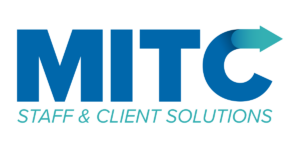
 2018 MITC
2018 MITC 2018 MITC
2018 MITC 2018 MITC
2018 MITC  An employee commits time theft by accepting pay for time not worked. They can do this either by working the payroll rounding rules or by fudging timesheets. For example, if Elise is paid in 15-minute increments, she could clock in 7 minutes late and clock out 7 minutes early without receiving a penalty. Employees who fill out paper timesheets have even more opportunities to record false hours.
An employee commits time theft by accepting pay for time not worked. They can do this either by working the payroll rounding rules or by fudging timesheets. For example, if Elise is paid in 15-minute increments, she could clock in 7 minutes late and clock out 7 minutes early without receiving a penalty. Employees who fill out paper timesheets have even more opportunities to record false hours. Paper timesheets
Paper timesheets Poor scheduling
Poor scheduling 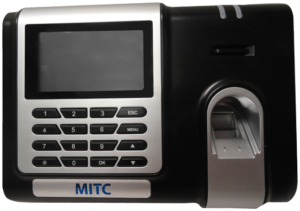 Biometrics
Biometrics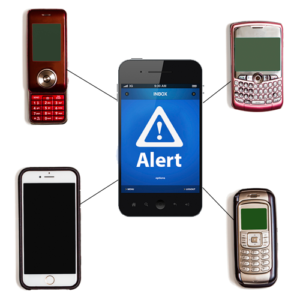 Management alerts
Management alerts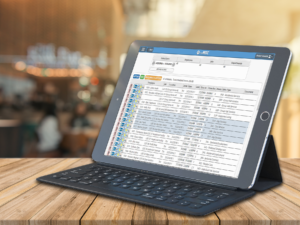
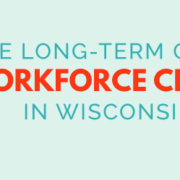 2018 MITC
2018 MITC






 The labor shortage does not have one simple cause. The American Network of Community Options and Resources (ANCOR) released a report in 2017 to address some of the reasons for the shortage, and some of them are surprising.
The labor shortage does not have one simple cause. The American Network of Community Options and Resources (ANCOR) released a report in 2017 to address some of the reasons for the shortage, and some of them are surprising. “Work-life balance” is a buzzword in most workplaces today, especially among younger generations. According to the 2017 State of the American Workforce report by Gallup, 53% of employees say that greater work-life balance and better personal well-being is “very important” when considering a new job. This attribute ranks higher than job security, significant pay increase, and company reputation. The percentage may also increase in the coming decade, since millennials and Gen Xers assign more importance to this than baby boomers.
“Work-life balance” is a buzzword in most workplaces today, especially among younger generations. According to the 2017 State of the American Workforce report by Gallup, 53% of employees say that greater work-life balance and better personal well-being is “very important” when considering a new job. This attribute ranks higher than job security, significant pay increase, and company reputation. The percentage may also increase in the coming decade, since millennials and Gen Xers assign more importance to this than baby boomers.





 There are no precise dates for when the millennial cohort starts or ends, but demographers typically agree that millennials were born between the early 1980s and the mid-1990s or early 2000s.
There are no precise dates for when the millennial cohort starts or ends, but demographers typically agree that millennials were born between the early 1980s and the mid-1990s or early 2000s. Data suggests millennials are driving a shift towards the public service sector. In 2010, the Journal of Business and Psychology
Data suggests millennials are driving a shift towards the public service sector. In 2010, the Journal of Business and Psychology  Millennials are the most highly educated and culturally diverse group of all generations. Surveys suggest that their political views are more liberal than previous generations, both socially and economically. According to
Millennials are the most highly educated and culturally diverse group of all generations. Surveys suggest that their political views are more liberal than previous generations, both socially and economically. According to  Use of Technology
Use of Technology